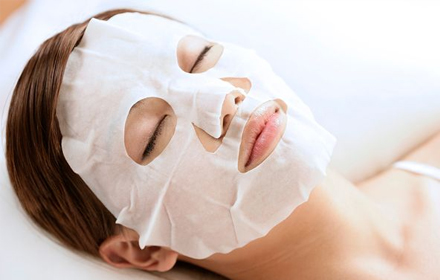Summary: 1. Polypropylene fiber
It is made b...
1. Polypropylene fiber
It is made by melt spinning of polypropylene, also known as
spunlace nonwoven, abbreviated as PP. It has a wide range of uses, such as geosynthetics, carpets, surgical gowns, surgical drapes, baby diapers and women's sanitary napkins, oil-absorbing materials, filter materials, thermal insulation materials, sound insulation materials, wipes, etc.
Beauty Care
Made of advanced spunlace technology, Phoenix Textile disposable beauty face towel has the characteristics of softness, high strength and high water absorption. It is a must-have for beauty salon or home wash.
2. Polyester fiber
The chemical name is polyethylene terephthalate, also known as polyester, abbreviated as PET or PES. The commonly used cross-sections in non-woven fabric technology are round, triangular, flat belt, hollow round, etc., which are usually suitable for insulation materials, thermal insulation wadding, wall coverings, clothing lining base fabrics, roof waterproof materials, geosynthetics, etc.
3. Polyamide fiber
It is usually made by melt spinning of polyamide 6, also known as nylon fiber, abbreviated as PA. It is mainly used for clothing lining base cloth, papermaking blanket, carpet, synthetic leather base cloth, polishing material, etc.
4. Polyvinyl alcohol fiber
The polyvinyl formal fiber obtained by wet spinning is also called vinylon. After blending with polypropylene fiber, geosynthetics can be produced, and water-soluble fiber can be used for embroidery base cloth, disposable materials, etc.
5. Polyacrylonitrile fiber
It is formed by copolymerization of acrylonitrile and other monomers, and formed by wet spinning or dry spinning. Mainly used in the production of thermal wadding, artificial fur, blankets, etc.
6. Cotton fiber
Cotton fiber contains a lot of impurities, which can be used as medical and sanitary non-woven materials after removal of impurities and bleaching. The whiteness should be greater than 80%, and the residual sulfur content should be less than 8mg/100g.
7. Viscose fiber
Composed of cellulose, wet spinning, abbreviated as VIS. Many new varieties of viscose fiber have been developed, such as high crimp, high wet strength, high moisture absorption, etc., which are often used in medical and health materials, and mixed with other fibers for clothing lining fabrics, synthetic leather base fabrics, food filter materials, etc.
8.Hemp fiber
Ramie fiber is mainly used in the production of carpet base fabrics, polishing materials, linings and building sound and heat insulation materials.
9.Wool fiber
It has natural curl, good elasticity, plump hand feeling, good warmth retention, strong hygroscopicity, soft luster, good dyeability, and unique shrinkage, but the price is high. Mainly used in the production of high-grade carpets, paper-making blankets, etc.
10. Lyocell fiber
A new type of cellulose fiber produced by the solvent method. The cellulose is directly dissolved in an organic solvent. After filtration, degassing and other processes, it is extruded and spun. After solidification, it becomes a cellulose fiber with a complete circular cross-section and smooth The surface structure has a high degree of polymerization. Lyocell fiber not only has the advantages of cellulose, such as hygroscopicity, antistatic and dyeability, but also has the strength and toughness of ordinary synthetic fibers. Its dry strength reaches 4.2cN/dtex, which is similar to that of ordinary polyester fibers. The wet strength is only about 15% lower than the dry strength, and still maintains a high strength. The fiber does not pollute the environment during production and is biodegradable itself, so it can be called "green fiber".
